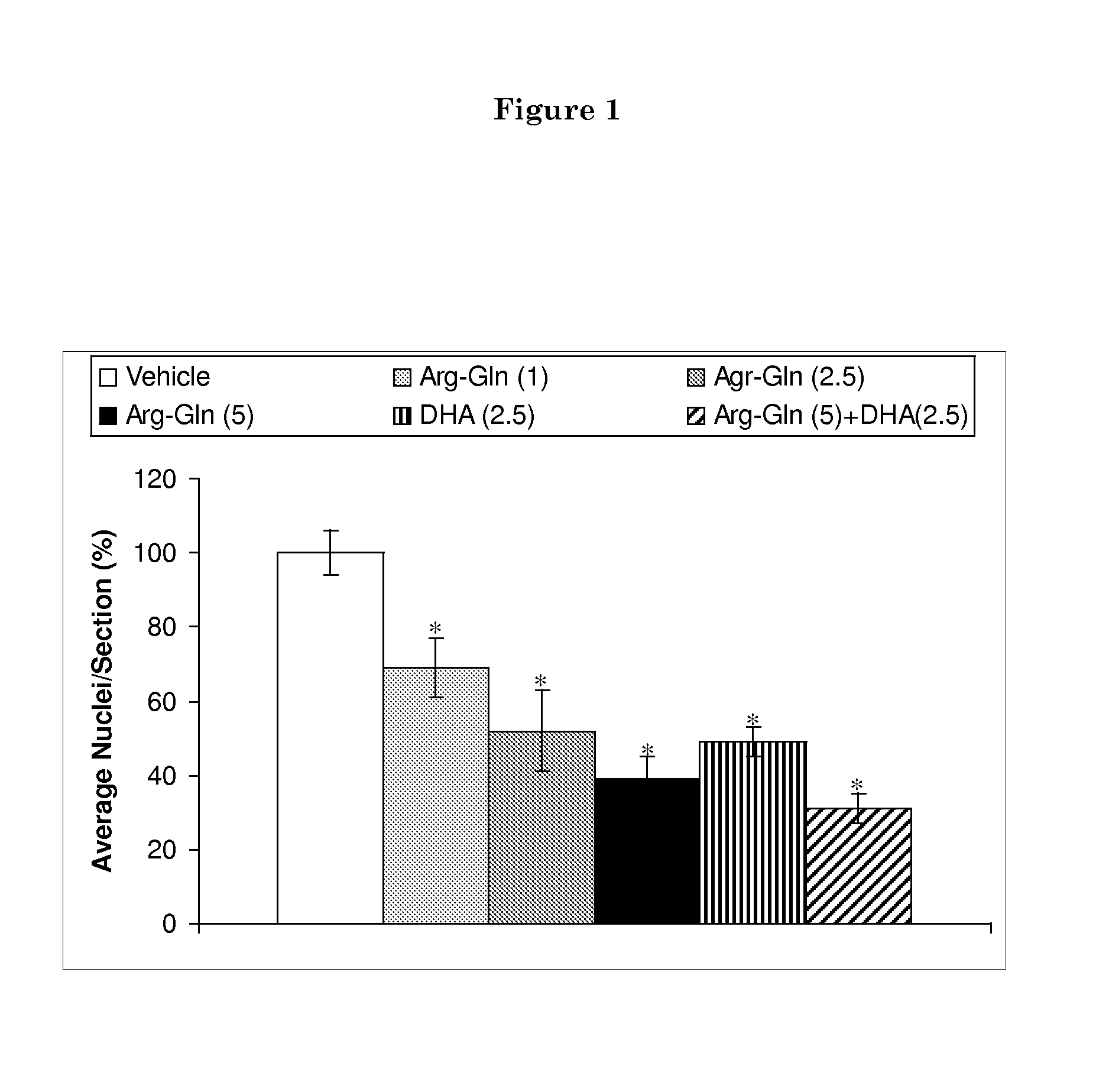Formulations and methods for nutrient delivery
a technology of formulas and nutrient delivery, applied in the field of enteral nutritional formulations, can solve the problems of lack of critical nutrients, lack of perfect means of nutritional support, and difficult to achieve the goals, so as to prevent the development of nutritional deficiencies and promote healthy development of subjects
- Summary
- Abstract
- Description
- Claims
- Application Information
AI Technical Summary
Benefits of technology
Problems solved by technology
Method used
Image
Examples
examples
[0103]Table 1 provides four example embodiments of the liquid nutritional formulation according to the present disclosure. Concentrations of each ingredient are listed in the Table and have units of g / kg / day. Further, each formulation described in Table 1 has been normalized to be equimolar with arginyl-glutamine. The embodiments of the nutritional formulation described in Table 1 are suitable for administration to animals, such as rodent or piglet models.
TABLE 1Embodiments of the nutritional formulationCitricα-ArginylAlanylFormulationAcidlactalbuminDHASCO ®GlutamineGlutamineArginine10.030.010.250.000.720.5820.000.010.251.000.000.0030.040.010.250.001.801.4440.000.010.252.500.000.00
[0104]DHASCO® refers to a mixture of oil extracted from the unicellular alga Crypthecodinium cohnii and high oleic sunflower oil. The resulting mixed oil contains about 40-45% of product weight as DHA. DHASCO® is commercially available from the Martek Biosciences Corporation.
[0105]Table 2 provides another ...
PUM
 Login to View More
Login to View More Abstract
Description
Claims
Application Information
 Login to View More
Login to View More - R&D
- Intellectual Property
- Life Sciences
- Materials
- Tech Scout
- Unparalleled Data Quality
- Higher Quality Content
- 60% Fewer Hallucinations
Browse by: Latest US Patents, China's latest patents, Technical Efficacy Thesaurus, Application Domain, Technology Topic, Popular Technical Reports.
© 2025 PatSnap. All rights reserved.Legal|Privacy policy|Modern Slavery Act Transparency Statement|Sitemap|About US| Contact US: help@patsnap.com

